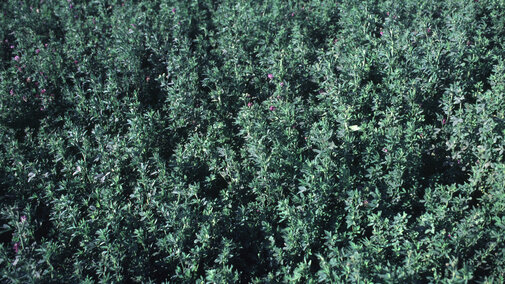The past few years have been tough on alfalfa fields. Some of the alfalfa plants that managed to survive the harsh conditions are now showing accumulated effects of stress. Add in the stress from harvest plus any insect damage or leaf diseases and plants that were old or weak starting out this spring may simply have too much root disease and not enough healthy root to keep going.
Now is a good time to check fields to determine if they need to be replaced, either with a new seeding this August or next spring. If weeds are becoming a problem, that is usually a good indication that the stand is getting thin and needs to be replaced.
Older, dryland fields with less than 25 shoots per square foot coming from two or three plants should be replaced. Very productive sites, such as irrigated and sub-irrigated fields, should have over 40 shoots per square foot coming from four to six plants.
Also, dig up and examine some roots. Healthy roots are solid and white, with a firm texture. A little browning in the top couple inches of the crown may not be much of a problem yet, but it could develop into a serious disease in another year or two. Roots that are discolored in one-third to one-half of the tissue might survive this coming winter, but these plants will not yield well next year. If crowns and taproots show extensive brownish discoloration or are becoming mushy and partly rotted, these plants probably won’t survive another winter.
This is a good time to observe and anticipate declining alfalfa stands and replace them on your terms instead of Mother Nature’s. Also consider whether rotating another crop into that field may benefit your cropping strategy as you may be able to reduce nitrogen in that field by at least 100 lb per acre.

